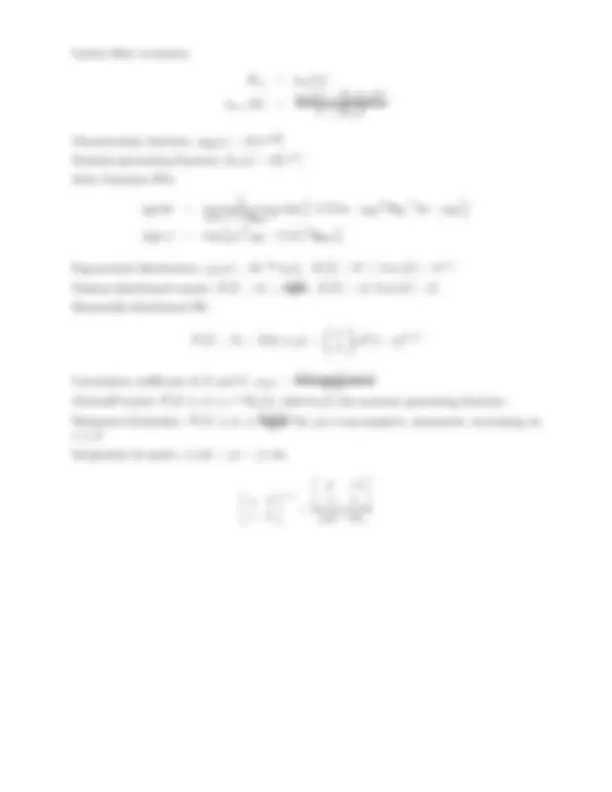








Study with the several resources on Docsity

Earn points by helping other students or get them with a premium plan


Prepare for your exams
Study with the several resources on Docsity

Earn points to download
Earn points by helping other students or get them with a premium plan
Community
Ask the community for help and clear up your study doubts
Discover the best universities in your country according to Docsity users
Free resources
Download our free guides on studying techniques, anxiety management strategies, and thesis advice from Docsity tutors
Material Type: Exam; Professor: Sauer; Class: Adv. Digital Signal Processing; Subject: Electrical Engineering; University: Notre Dame; Term: Fall 2008;
Typology: Exams
1 / 10

This page cannot be seen from the preview
Don't miss anything!







Note: You are allowed only a calculator, writing utensils, and two sheets of paper, A4 or 8. x 11 inches, with both sides containing whatever notes you wish to bring into the exam.
Calculators are to be used only for simple arithmetic manipulations, not polynomial factor- ing, etc. Make sure you show all your steps if you want credit for your results.
Good luck and Merry Christmas!
Problem 1 (10)
Problem 2 (30)
Problem 3 (30)
Problem 4 (30)
Problem 5 (10)
Total (110)
Name
H(z) =
1 + z −^1 − 0. 75 z −^2 1 − 0. 6 z −^1
Find whether this system is minimum-phase. If not, find the transfer function (in simplest form similar to the above expression) of the minimum-phase alternative.
(b) (10 pts.) If this predictor were implemented via a lattice filter, what would be the reflection coefficients K 1 , K 2 , K 3 , K 4?
(c) (10 pts.) What is the correlation coefficient between the forward (f 1 (n)) and backward (g 1 (n)) prediction error at the output of first stage of the lattice filter of (b)?
H(z) = H 0 (z 2 ) + z −^1 H 1 (z 2 ).
(a) (10 pts.) Starting from the definition of the z-transform, find the form of the functions H 0 (z) and H 1 (z).
(b) (10 pts.) For the specific case of
H(z) =
1 − 0. 8 z −^1
find the forms of H 0 (z) and H 1 (z).
(b) (10 pts.) Find the values of the minimum mean-squared error prediction coefficients for a second-order AR model of this signal.
(c) (10 pts.) Write the difference equation of a system which will whiten the signal x(n) from (a). Is this system stable? What is the variance of the “re-whitened” signal? Can you reconcile these attributes of the signal and system?
Lattice filter recursion:
K (^) m = am (m)
am− 1 (k) =
am (k) − K (^) m bm (k) 1 − |K (^) m | 2
Characteristic function: φ (^) X (ω) = E[ejωX^ ]
Moment generating function: θX (s) = E[esX^ ]
Joint Gaussian RVs:
p (^) X (x) =
(2π) N/^2 |ΛX | 1 /^2
exp
{ − 1 /2(x − μ (^) X ) T^ ΛX−^1 (x − μ (^) X )
}
φ (^) X (ω) = exp
{ jω T^ μ (^) X − 1 / 2 ω T^ ΛX ω
}
Exponential distribution: p (^) X (x) = θe−θx^ u(x), E[X] = θ −^1 , V ar(X) = θ −^2.
Poisson distributed counts: P (X = k) = e^ −θ (^) θ k k! ,^ E[X] =^ θ,^ V ar(X) =^ θ. Binomially-distributed RV:
P (X = k) = B(k; n, p) =
( n k
) p k^ (1 − p) n−k
Correlation coefficient of X and Y : ρXY = E[(X−μX^ )(Y^ −μY^ )
∗ (^) ] σX σY
Chernoff bound: P(X ≥ a) ≤ e−at^ θX (t), with θX (t) the moment generating function.
Bienayme-Chebyshev: P(X ≥ a) ≤ E[ ϕϕ((aX) )]for ϕ(x) non-negative, symmetric, increasing on x ≥ 0.
Integration by parts:
∫ u dv = uv −
∫ v du
[ a b c d
[ d −b −c a
]
(ad − bc)